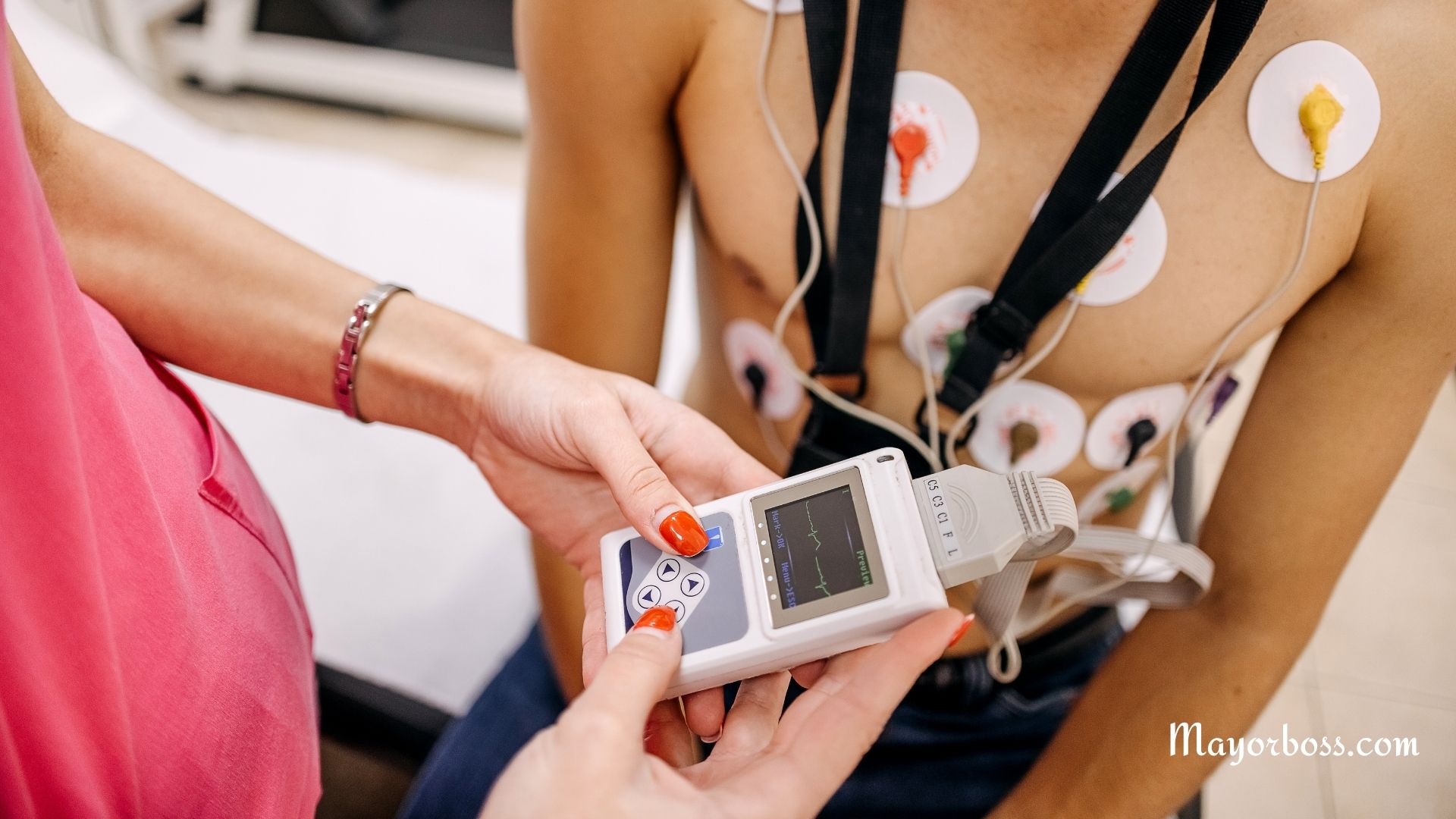What is Sinus Arrhythmia?
What is Sinus Arrhythmia? Sinus arrhythmia is generally a harmless condition where your heart rate varies with your breathing. In other words, your heart rate increases when you breathe in and slows down when you breathe out. This is a normal phenomenon, especially seen in young, healthy people, but it can also be present in other age groups.

What Causes Sinus Arrhythmia?
Natural Body Mechanisms
Your body has a natural way to control heart rate and breathing, mainly through the autonomic nervous system. When you breathe in, pressure drops in your chest, encouraging the heart to speed up. Conversely, as you breathe out, pressure rises, signaling your heart to slow down.
Emotional Factors
Stress and anxiety can sometimes contribute to sinus arrhythmia. During emotional highs and lows, your body releases hormones that can affect your heart rate.
Health Conditions
Although sinus arrhythmia is usually benign, it can sometimes indicate an underlying issue, such as heart disease or a breathing disorder. However, these cases are relatively rare.
How is Sinus Arrhythmia Diagnosed?
Electrocardiogram (ECG)
The most common way to diagnose sinus arrhythmia is through an electrocardiogram (ECG). During an ECG, small electrodes are placed on your skin to capture the electrical activity of your heart. The test usually takes a few minutes and is generally painless.
Holter Monitor
In some cases, you might be asked to wear a Holter monitor for 24 to 48 hours. This device continuously records your heart’s activity, offering a more in-depth look into any irregularities.
What Are the Symptoms?
Sinus arrhythmia usually doesn’t have symptoms. Most people discover they have it during a routine check-up or a diagnostic test for another condition. However, if you feel palpitations, shortness of breath, dizziness, or chest discomfort, you should consult a doctor.
Treatment and Management
Usually, No Treatment Required
In most cases, sinus arrhythmia doesn’t require treatment. It’s considered a normal physiological occurrence, especially in young and healthy individuals.
Addressing Underlying Causes
If the arrhythmia is linked to another health issue, treating that condition usually resolves the arrhythmia as well. For example, managing stress or treating heart disease can stabilize your heart rate.
Monitoring
Even though treatment is often unnecessary, regular check-ups can help monitor any changes. This is especially crucial if you have other risk factors for heart disease.
Should You Be Worried?
Sinus arrhythmia is usually not a cause for concern. If you discover you have this condition, there’s generally no need to panic. However, if you’re experiencing symptoms like shortness of breath, dizziness, or chest pain, it’s crucial to consult your doctor for a thorough evaluation.
Common Types of Sinus Arrhythmia
Sinus arrhythmia may sound like a single condition, but it actually comes in different types. Knowing the type you have can provide a clearer picture of your heart’s health. Below are some of the most common types of sinus arrhythmia.
Respiratory Sinus Arrhythmia (RSA)
Respiratory Sinus Arrhythmia (RSA) is the most common type. In RSA, your heart rate increases when you breathe in and decreases when you breathe out. This type is often seen in healthy individuals, particularly among young people.
Why Does It Happen? RSA is considered a natural part of your body’s way of optimizing lung function and blood flow. Essentially, it ensures that your heart and lungs work efficiently together.
Should You Worry? Generally, you don’t need to be concerned about RSA. It’s a natural phenomenon that doesn’t usually require any treatment.
Non-Respiratory Sinus Arrhythmia
In this type, the heart rate variability is not related to breathing. Unlike RSA, the irregular rhythm here is not synced with your breaths.
Why Does It Happen? This type can be due to various factors such as hormonal changes, medications, or underlying health issues like heart disease.
Should You Worry? If you’re diagnosed with non-respiratory sinus arrhythmia, it’s a good idea to consult your doctor for further evaluation. It may require more in-depth investigation to rule out underlying conditions.
Tachy-Brady Syndrome
Also known as Sick Sinus Syndrome, Tachy-Brady is characterized by alternating periods of fast and slow heart rates.
Why Does It Happen? This occurs when the sinus node, the natural pacemaker of the heart, fails to maintain a regular rhythm. The reasons can range from age-related wear and tear to damage from heart disease.
Should You Worry? Yes, Tachy-Brady syndrome is a serious condition that often requires medical intervention, including the possibility of a pacemaker.
Sinus Arrhythmia in Children
Sinus arrhythmia is common in children and usually falls under the category of RSA.
Why Does It Happen? It’s often a part of the natural development of the heart and nervous system.
Should You Worry? Typically, there’s no need for concern, and children often outgrow it as they age.
So, in a nutshell, sinus arrhythmia is typically a harmless condition. It’s your body’s natural way of syncing your heart rate with your breathing. While usually no cause for alarm, if you have symptoms, make sure to get checked out.






